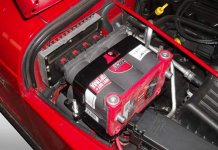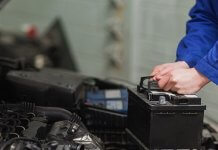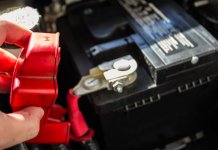To maintain your cars battery you need follow to these steps.</p> </p>
Locate the battery in your car.</span></p>
Most car batteries have a heavy-duty plastic case with two terminals to connect the positive and negative (ground) wires to the car. The terminals are usually made of lead or brass and can look like two thimbles. The terminals can also be two threaded screws or two threaded holes on the front of the battery. Take a picture before removing the cables to make sure the positive and negative cables do not get reversed.</p>
</p> Check battery water level</span></p>
Check the battery’s water level every 2 to 3 months, only if it’s a non-maintenance-free wet- cell battery. You will likely have either a wet-cell battery or an Absorbed Glass Matt (AGM) battery. With an AGM battery, never attempt to open the battery. It is a good idea to only have a battery expert check the water levels in a maintenance-free battery-they rarely ever need water. For non-maintenance-free wet-cell batteries you can check the battery’s water level every 2 or 3 months. The water should just touch the bottom of the battery’s refill hole.</p>
</p> Pull up the fill caps on the battery to inspect the fluid level. Some batteries do not have fill caps because they are made so they do not need any water.</p>
</p> Refill the battery only with distilled water, if the level is low. Pour the water into the cell using a funnel. Do not overfill. Wait for the water to reach the bottom of the refill hole. Never overfill into the fill holes.</p>
</p> Clean battery terminals</span></p>
Remove the connectors from the battery terminal by moving them from side to side and gently pulling them up.</p>
</p> Rub the wire brush into a paste of baking soda mixed with distilled water. Gently scrub the terminal to achieve a shine and remove dried acid build-up.</p>
</p> Never use a rubber mallet to put terminals on a battery. Always use terminal spreaders to widen the terminal connectors opening to fit over the battery terminals.</p>
<</p> Table of Content</p></p>LEAVE A REPLY








I totally agree when you said that a professional should handle the battery when it comes to checking the water levels to ensure that it will never have issues regarding that. This might be the problem with the original battery of my son’s car. He never took it to a mechanic ever since he bought it a year ago, and now it is not starting which made him take a cab to work. There might be something that has affected it that cannot be fixed or detected by unprofessionals.